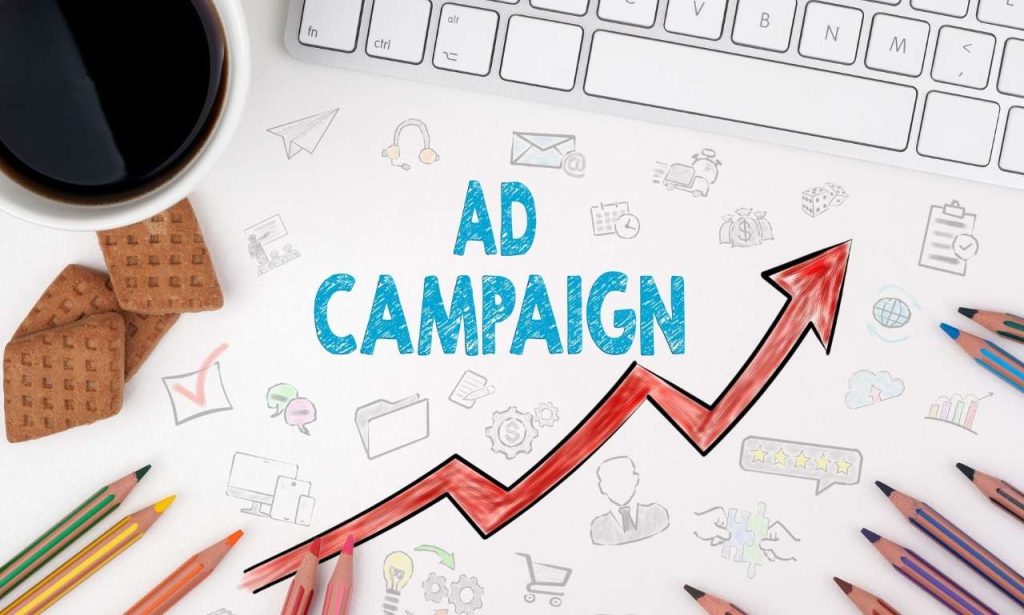Email gives insurance brokers the best marketing ROI. Most agents barely use email. Others use it poorly. This creates your golden opportunity. Insurance runs on trust. Email builds trust better than anything else. Your clients actually want to hear from you. They need your know-how. Email delivers your expertise right to their inbox. This guide shows you exactly how to win with insurance email marketing. You’ll see real examples that get results. Let’s discuss key tips brokers need to master in insurance email marketing.
Why email marketing is crucial for insurance agents

Insurance marketers waste too much money on expensive ads. The numbers rarely work out. Email flips this equation. You can reach thousands of people for pennies. The return can be massive.
Your current clients already trust you. They need ongoing guidance. Regular emails keep you in their thoughts. The relationship grows stronger. Clients stay longer. They buy more. They tell friends about you.
New prospects rarely buy immediately. Most need 7-12 touchpoints before deciding. Email nurturing converts cold leads into clients automatically. You set it up once, and it works continuously.
Email marketing works 24/7. Create it once, benefit forever. This frees you to handle important face-to-face meetings. Your email system handles the consistent follow-up.
The stats don’t lie. Email averages $42 back for every $1 spent. Nothing else comes close. One of my insurance agencies made $127,000 from a single email campaign.
Most insurance agents send boring emails. Many don’t email at all. This creates your chance to stand out. Send helpful, engaging messages. Clients notice the difference immediately.
Insurance decisions happen gradually. People research options carefully. Email keeps you present throughout this process. You become their trusted advisor. When they’re ready to buy, you’re the natural choice.
Insurance email examples to inspire your marketing strategy
Let’s look at real insurance emails that get results. These have generated millions in premiums for my clients.
Welcome email
Your welcome email sets the tone. Make it count. Thank new subscribers personally. Tell them what to expect. Give them something useful right away.
A client of mine includes a free coverage checklist in welcome emails. It helps people spot gaps in protection. This email gets opened 72% of the time. Almost half the readers book a call. The focus stays on helping, not selling.
Send welcome emails instantly. Waiting even one day cuts effectiveness dramatically. Set up automatic delivery. Test regularly to make sure it works properly.
In welcome emails, clearly outline the next steps and tell readers exactly what to do. Should they download something? Book a call? Reply with questions? Be direct about what happens next.
Newsletters build relationships over time. Consistency matters most. Monthly newsletters work best for insurance agencies. They maintain contact without overwhelming people.
Focus on education, not just sales pitches. One agent shares seasonal risks each month, and another explains coverage in everyday language. Readers actually look forward to these emails, and they save and share them.
Stories connect emotionally. Share real claim examples (with details changed). Show how good coverage saved someone’s day. These stories make insurance benefits real. They drive action better than dry facts.
Use different content types in newsletters. Mix short articles with videos and graphics. This variety keeps readers interested. Different people prefer different formats. This approach effectively reaches more of your audience.
Policy renewal reminders
Start renewal conversations early—60 days before expiration. This gives clients time for questions and prevents last-minute panic. Early reminders also show you’re organized and proactive.
Show specific benefits in renewal emails. Remind clients what their policy covers. One agent includes a “protection snapshot” with renewals. It shows exactly what the client gets. This visual reminds them of the value of their policy.
Create proper urgency without pressure tactics. State deadlines clearly. Explain what happens if they miss the renewal window. Focus on protecting them, not pushing them. Clients appreciate this honest approach.
Make renewal ridiculously easy. Include direct payment links. Offer multiple payment options. Remove every possible obstacle. The easier you make it, the higher your renewal rates. Convenience drives decisions.
Educational drip campaigns

Education builds trust like nothing else. Create campaigns around specific topics. “Life insurance for new parents” works great. So does “Coverage for first-time homebuyers.” These targeted campaigns address specific situations.
Space educational emails properly. Every 3-5 days works well. This gives readers time to absorb information and prevents email fatigue. For best results, a full sequence might run 2-3 weeks.
Each email should make just one main point. Keep it focused and useful. One agent explains a single coverage type per email. Another answers one common question at a time. This clarity helps explain complex insurance topics.
End educational emails with clear next steps. What should readers do with this information? How does it apply to them? Include specific calls to action. Make it easy for interested people to contact you.
Seasonal campaigns
Seasonal risks create natural email opportunities. Hurricane season affects coastal clients. Winter brings ice damage risks. Spring floods threaten many areas. These patterns generate relevant email topics.
Plan a seasonal email calendar and map campaigns around predictable events. New Year’s works for coverage reviews, tax time prompts retirement discussions, and back-to-school season fits life insurance conversations. Plan these annually.
Timing matters with seasonal emails. Send hurricane tips before storm season. Share winter protection advice before the first freeze. Early delivery lets clients use your recommendations, and this proactive approach showcases your expertise.
Include specific, practical advice. One agency provides a printable emergency contact sheet, and another offers a home inventory form. These useful tools deliver immediate value and strengthen relationships regardless of sales.
Send a personally branded Digital Magazine
Digital magazines lift your professional image. They position you as a true authority. Almost no insurance agents use this format. It immediately sets you apart from competitors.
Keep digital magazines brief—four to six pages works perfectly. Quality beats quantity every time. Use strong visuals and scannable text. Optimize for mobile viewing—most people will read on phones.
Be consistent with digital magazines. Quarterly publishing works well for most agencies. It provides good content without overwhelming your team. Once you start, stick to your schedule. Reliability builds anticipation.
Share your magazine across channels. Email it directly. Post on social media. Add it to your website. This distribution maximizes readership and stretches your content investment across multiple platforms.
Best practices for crafting effective insurance marketing emails
These specific tactics drive email success. They come directly from my top-performing insurance clients.
Write compelling subject lines
Your subject line determines whether anyone sees your message. Make it count. Questions work amazingly well. “Are you making this coverage mistake?” got a 63% open rate. Curiosity drives opens.
Keep subject lines under 50 characters. This ensures full visibility on phones. Short, punchy phrases win consistently. “Your policy review: 3 things to know” beats lengthy alternatives every time.
Use personalization to boost opens. Adding the recipient’s name lifts open rates by 26%. Location references work too. “Dallas homeowners: Storm alert” feels specifically relevant. This relevance drives action.
Test different subject line styles. Try questions versus statements. Compare specific versus general wording. Let data guide your choices. What works for one agency may fail for another. Your audience has unique preferences.
Personalize your messages
Personalization goes beyond using names. Segment your list by policy type. Send different messages to auto versus home insurance clients. This targeting improves relevance dramatically. Relevant emails get better results.
Mention specific client information when possible. Reference their current coverage. Acknowledge their history with your agency. These touches show you see them as individuals, and people respond to this recognition.
Adjust sending times based on engagement data. Some clients read their morning emails, and others check at night. Most email platforms allow time optimization. This simple change can lift open rates 10-15% without changing content.
Write like you talk to clients in person. Skip insurance jargon and technical terms. One successful agent starts emails with “Quick thought for you…” This friendly style feels like a message from someone who cares.
Focus on benefits, not features

People care about outcomes, not policy details. Translate features into benefits. Instead of “Our policies include liability coverage,” say “You’ll be protected if someone gets hurt on your property.” This approach connects emotionally.
Share stories that show benefits. Brief client examples make insurance real. They show protection in action. Readers picture themselves in similar situations. This visualization drives decisions.
Address specific fears in your emails. Fear of financial disaster motivates life insurance purchases, and worry about replacement costs drives homeowner coverage. Acknowledge these concerns directly and show how your policies address them.
Use “you” language instead of “we” language. Focus on the client’s viewpoint. Compare “We offer flexible payments” with “You can choose the payment plan that fits your budget.” The second version centers the client. It resonates more deeply.
Include clear calls to action
Every email needs one clear purpose. Decide what action you want. Make this crystal clear. Use direct, action language. “Schedule your review call” works better than “If you’d like to discuss your coverage, we’re available.”
Stick to one main call to action per email. Multiple options create confusion, and people end up doing nothing. Choose the single most important next step. Focus the entire email on driving that specific action.
Make your call to action stand out visually. Use buttons instead of text links. Choose colors that pop. Make buttons large enough for easy tapping on phones. These design elements significantly impact click rates.
Place your call to action multiple times in longer emails. Include it after your intro. Repeat it mid-message. End with it too. Each placement catches readers at different decision points. Some decide quickly. Others need the full context.
Conclusion
Email marketing completely changes insurance businesses and builds deeper client bonds. It also generates steady referrals and drives new policy sales. Agents who master email create lasting advantages. They grow while others struggle.
These strategies work in real agencies. I’ve seen them transform businesses nationwide. Start simple. Begin with welcome emails and renewal sequences. Add newsletters and campaigns as you gain confidence.
Top insurance agents make email a daily priority. They consistently deliver value. They focus on helping, not just selling. This client-first approach builds trust. Trust creates lifelong relationships and ongoing referrals.
Your email marketing success starts today. Take one idea from this guide and implement it this week. Build momentum with small, consistent actions. The results will grow over time, and your business will transform.
Also Read: Who Pays the Real Estate Commission?
FAQs
Monthly newsletters work well. Add campaign emails as needed. Quality beats quantity every time.
MailChimp, ActiveCampaign, and Constant Contact all offer insurance-friendly features. Choose based on your specific needs.
Test different subject lines. Send at optimal times. Clean your list regularly. Deliver valuable content consistently.
Yes, when done right. Include unsubscribe options. Honor opt-outs immediately. Follow state guidelines for insurance communications.




